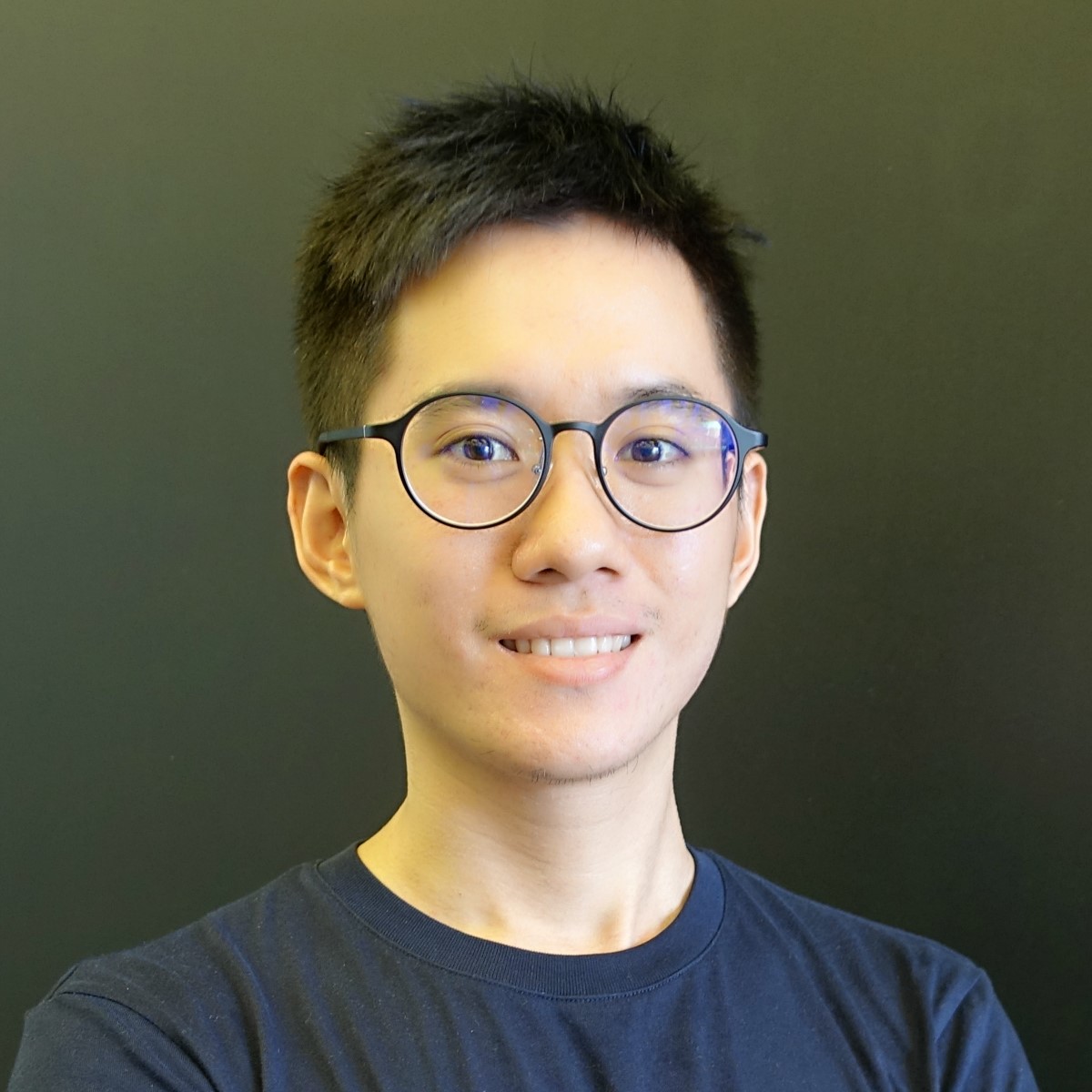Biography
I am a software engineer specializing in
machine learning, with a strong passion for developing machine
learning models for production. Currently, I have several years of
experience working with the
HTC VIVE
team, where I have primarily focused on developing computer vision
applications for AR /
XR
/
VR
devices using machine learning and deep learning techniques for visual
understanding .
In my previous role, I served as a data
scientist at Garena (Sea Group) for over a year. My primary focus
there was on building a recommendation system for the
BOOYAH! LIVE
platform. Subsequently, I joined
Dcard
as an ML Engineer, where my main responsibility was to develop a post
recommendation system that aimed to improve the user experience on the
platform.
I hold an M.S. degree in Electrical
Engineering from National Tsing Hua University, where I worked with
Professor
Chia-Wen Lin. My research there was focused on computer vision and image
processing using deep learning techniques. Additionally, I obtained a
B.C. degree in Electrical Engineering from National Chung Cheng
University, where I studied Communications and Networking intensively.
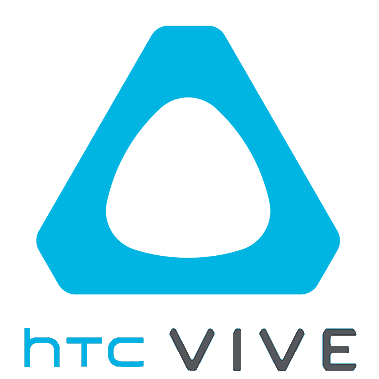
HTC VIVE
ML Engineer
Taipei, Taiwan
Nov. 2022 - Present

Dcard
ML Engineer
Taipei, Taiwan
Aug. 2022 - Nov. 2022

Garena | SEA
(BOOYAH!)
Data Scientist
Taipei, Taiwan
Feb. 2021 - Mar. 2022

HTC VIVE
ML Engineer
Taipei, Taiwan
Dec. 2017 - Feb. 2021

National Tsing Hua University
M.S. in E.E.
Hsinchu, Taiwan
Sep. 2015 - Oct. 2017
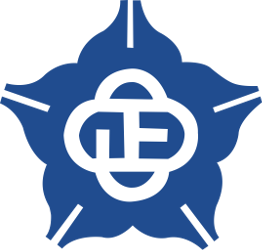
National Chung Cheng University
B.S. in E.E.
Chiayi, Taiwan
Sep. 2011 - Jun. 2015
Github Repositories
Publications
Coupled Adversarial Learning for Single Image Super-Resolution
IEEE SAM 2020
In this study, a coupled adversarial net (CAN) based on Siamese Network Structure is proposed, to improve the effectiveness of the feature extraction. In the proposed CAN, we offer adversarial loss (GAN) and semantic feature distances simultaneously, reducing the training complexity as well as improving the performance.
Projects
Master's Thesis, 2017
Pairwise Learning on Image Quality Assessment using Deep Siamese Neural Network

In this thesis, we propose a pairwise training model for assessing the subjective quality of images. Our model is based on a Siamese network architecture, enabling training on paired-comparison data. This architecture allows us to address image retargeting problems and extend to similar tasks with ease. Furthermore, our method can alleviate the difficulty of collecting data on general subjective quality assessment databases. Our experimental results demonstrate that our proposed approach yields superior results compared to previous works in the retargeted image case and comparable results in the general quality assessment database, even with the limitation of labeling information.
Side Project, 2017
Open View: Single Image Retargeting by GAN-based Boundary Inpainting
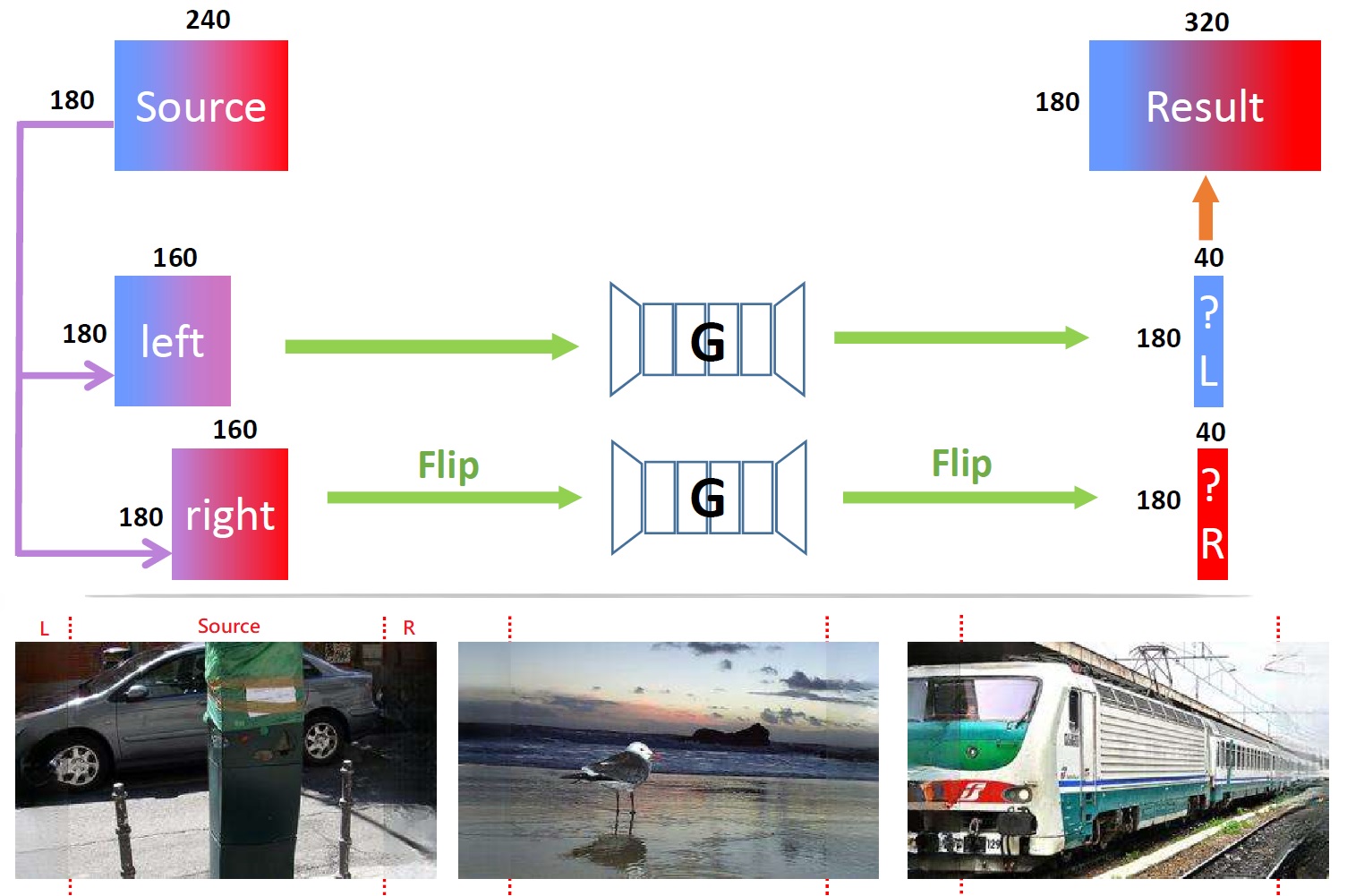
In this project, a generative adversarial network (GAN) is employed to mitigate visual distortions resulting from non-matching aspect ratio content on display devices (e.g., 4:3 to 16:9). This approach aims to enhance the user experience when viewing old specification content. The proposed method combines two classic image processing problems, image retargeting and image inpainting, to expand visual regions by inpainting boundaries to accommodate changes in the aspect ratio of image content. The designed loss function (comprising adversarial, perceptual, and texture loss) and multi-input/output architecture of our network yield results that accurately approximate boundaries in some non-complex situations.
Industry-Academy Cooperation Plan(NOVATEK co.,ltd), 2016
A Resource-Constrained Scheme of Image Super-Resolution
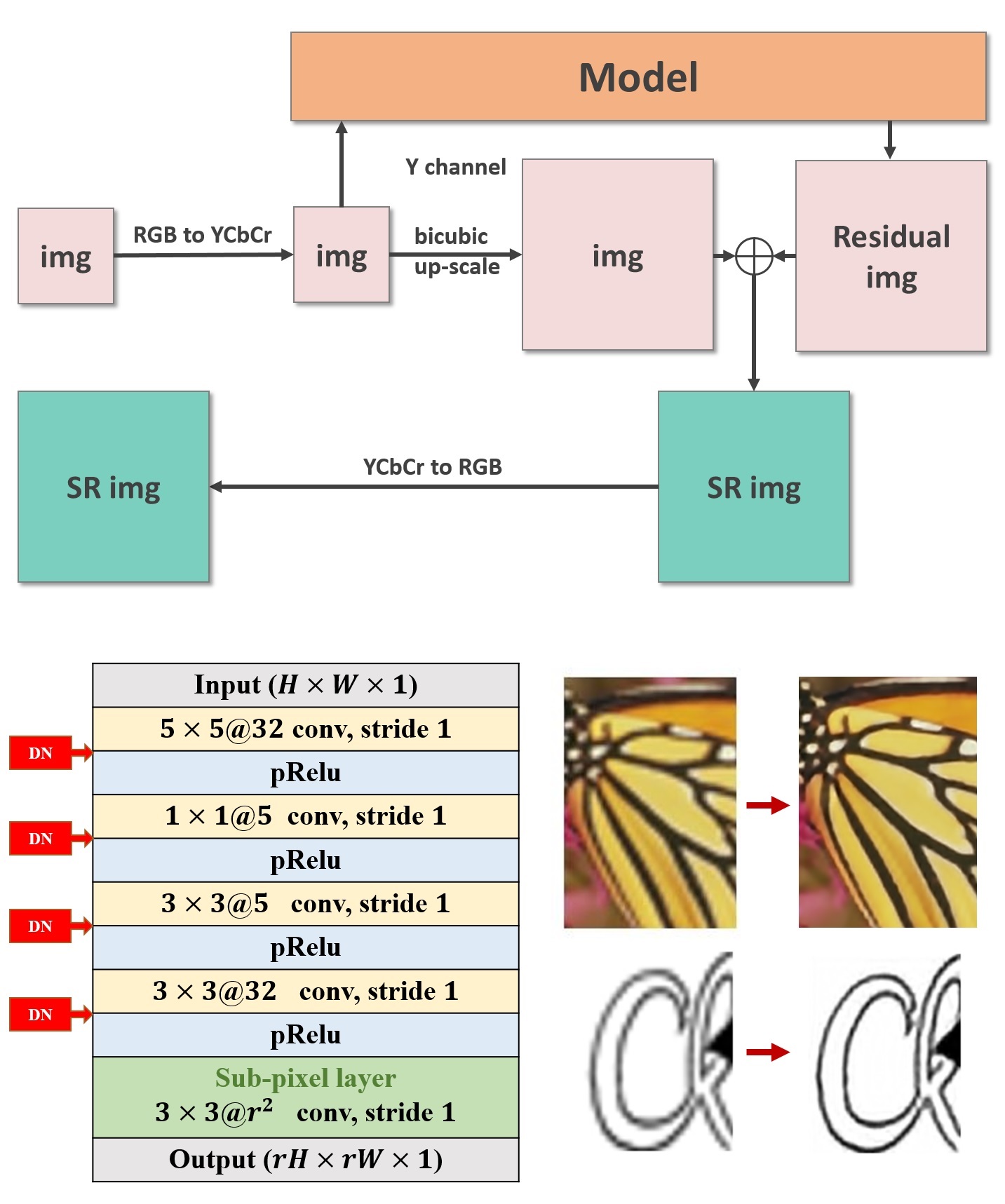
We present a CNN-based super-resolution method that is suitable for embedding chips in high-resolution digital television under resource constraints. To meet this requirement, we employ the shallow version of FSRCNN as the backbone and replace the deconvolution up-sample layer with ESPCN's sub-pixel up-sample layer. To address the artifact distortion resulting from the shallow network's low capacity, we incorporate divisive normalization after every convolution layer and include total variation loss in the objective cost function to improve the network's learning efficiency. Our approach achieves comparable performance and visual quality with fewer parameters, demonstrating its effectiveness in resource-constrained scenarios.
Computer Vision Final Project, 2015
Real-time Computing Mathematical Expressions Recognized from Images

Efficiently and accurately computing mathematical expressions is crucial for students during their studies. However, manually inputting equations into a calculator can be time-consuming and error-prone. To address this issue, we propose a method for recognizing mathematical expressions from images. Specifically, we detect expressions in images by extracting feature points and crop out individual characters. We then classify these characters as corresponding numbers and symbols, enabling efficient and accurate computation of mathematical expressions from images.
Independent Study, 2014
5G Communication-LTE TM6 & Beamforming Visualization
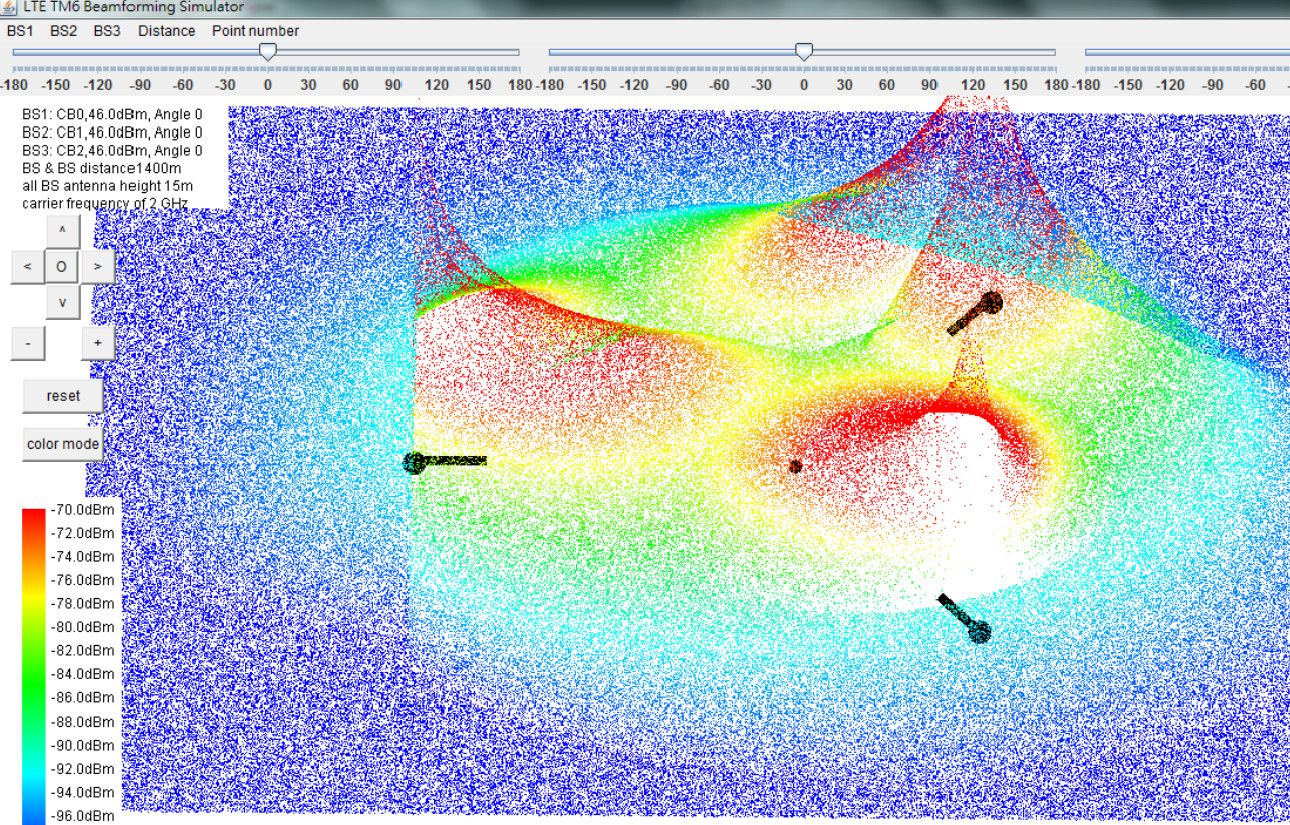
We have developed a JAVA-based platform featuring three base stations for 3D visualization of the advanced communication technique of Beamforming, utilizing the TM6 model in Transmission modes in LTE Release 9. Our platform enables users and researchers to effectively comprehend the variations in signal intensity between the three base stations while employing Beamforming and distinct codebooks.
Certifications
TensorFlow Developer Certificate
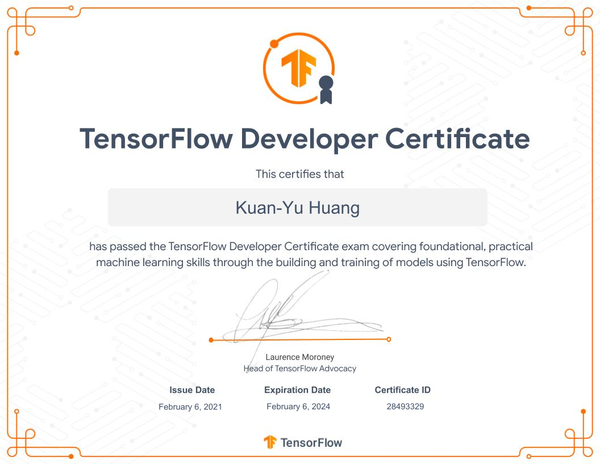
This level one certificate exam tests a
developers foundational knowledge of integrating machine learning
into tools and applications.
The certificate program requires an
understanding of building TensorFlow models using Computer Vision,
Convolutional Neural Networks, Natural Language Processing, and
real-world image data and strategies.
Advanced Machine Learning with TensorFlow on Google Cloud Platform Specialization
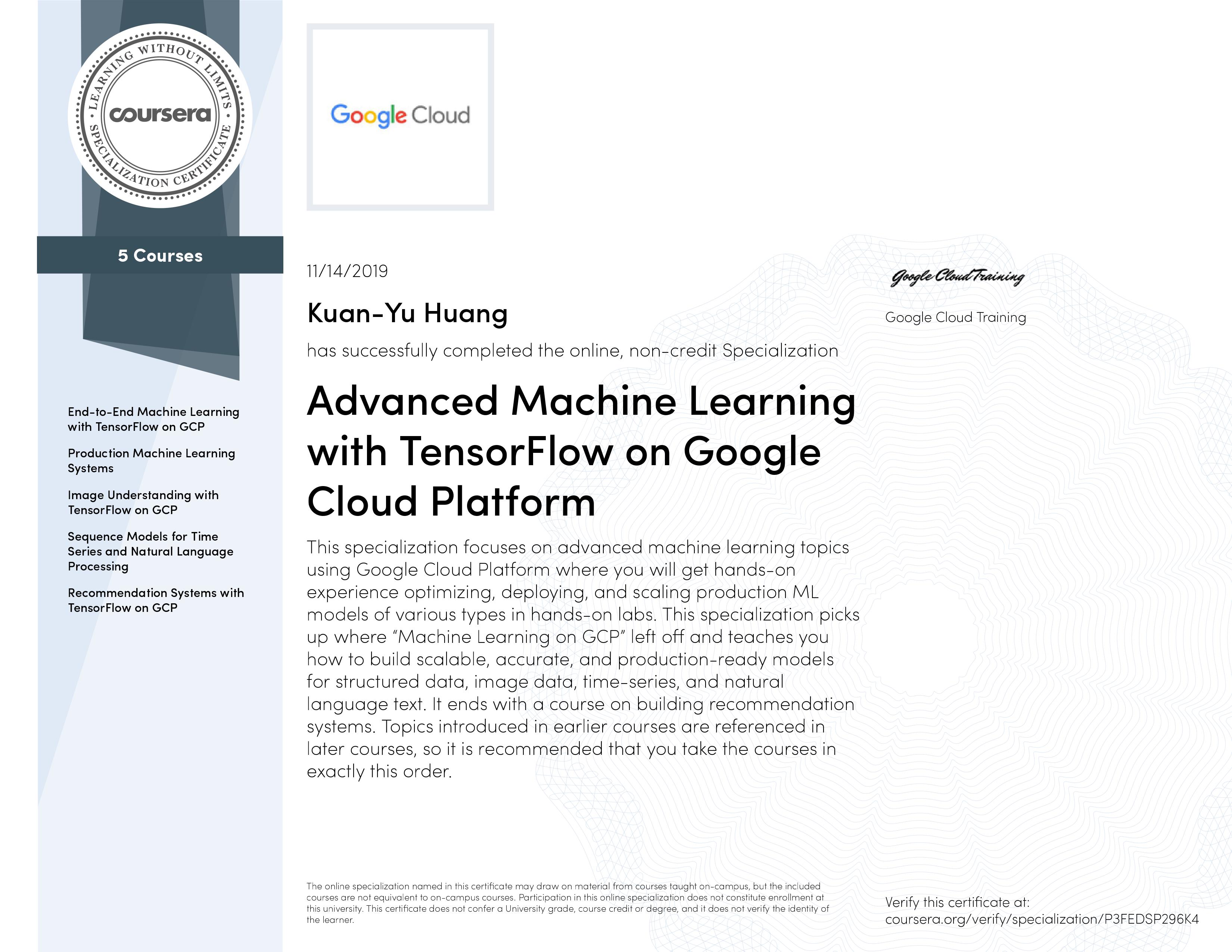
Machine Learning with TensorFlow on Google Cloud Platform Specialization

100Days Machine Learning Marathon Challenge
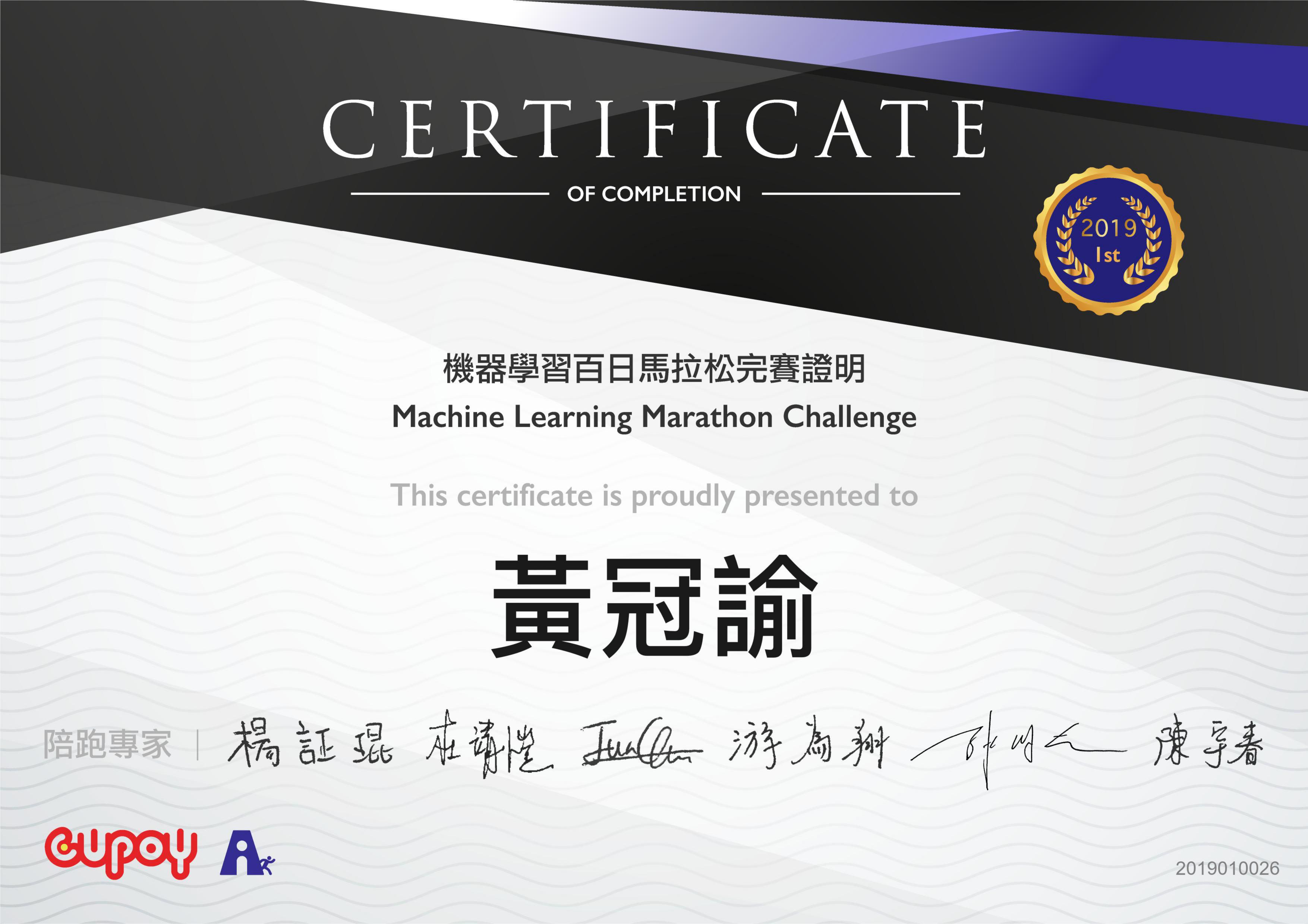
A marathon Challenge about training your machine learning skill on Kaggle in 100 consecutive days.
